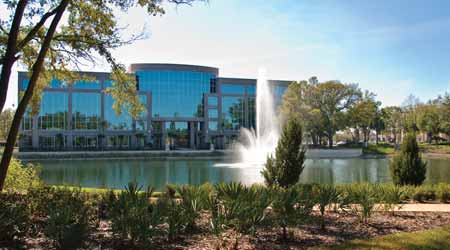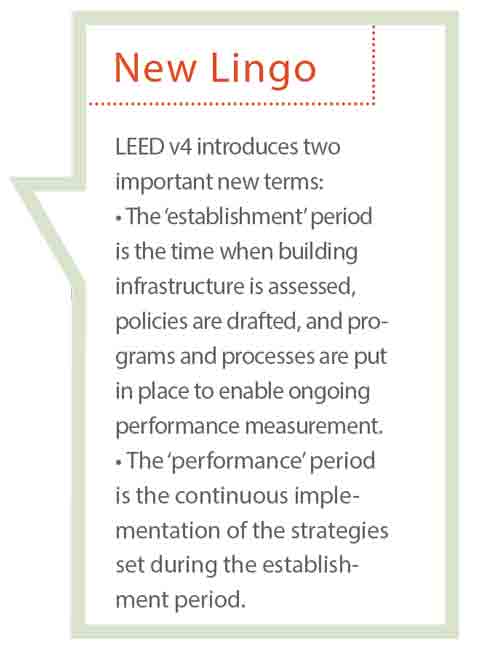 Limiting turf area to 25 percent or less of the vegetated area is one option for earning the Site Management credit in LEED v4.
Limiting turf area to 25 percent or less of the vegetated area is one option for earning the Site Management credit in LEED v4.Performance-Based Approach, Flexibility Highlight Big Changes to LEED v4
First of a two-part article detailing the updates to the LEED v4 Operations and Maintenance Existing Buildings rating system.
The first version of LEED green building certification for existing buildings was released in 2002 as a pilot. Since then, the rating system has continued to evolve along with the needs of the market, strategies, and technologies. Today, 4,900 projects have earned certification through LEED Operations and Maintenance (O+M) for Existing Buildings. Released in November 2013, LEED v4 is the newest iteration of LEED and includes an update to the LEED for O+M Existing Buildings requirements.
LEED v4 includes flexibility with strategies to fit the unique aspects of projects. It offers a performance-based approach to operations and maintenance that calls for measurable results throughout a project’s life. LEED v4 places greater emphasis on demand response. And it has a more comprehensive approach to water efficiency (by evaluating total building water use) and materials — not only use of materials in buildings, but also the impact of materials on human health and the environment.
On October 31, LEED v4 became the only version of the rating system open and available for registration. Here are some of the major things to expect and look out for when looking to achieve certification.
 What changed with LEED v4 O+M?
What changed with LEED v4 O+M?
LEED v4 gives special attention to the credit structure. All prerequisites and credits list “establishment” and “performance” requirements separately. For existing buildings, the establishment period is the time when building infrastructure is assessed, policies are drafted, and programs and processes are put in place to enable ongoing performance measurement. The performance period is the continuous implementation of strategies set during the establishment period.
The LEED O+M rating system saw the addition of new credits, and some LEED 2009 credits were combined into clearer, condensed versions. Here are some of the most notable changes:
Site management (1 point). This combines two credits from LEED 2009: SS Credit 2 Building Exterior and Hardscape Management Plan and SS Credit 3 Integrated Pest Management, Erosion Control and Landscape Management Plan. The new v4 credit provides much clearer requirements and added performance criteria, including the addition of soil testing and irrigation system monitoring requirements. Three options for addressing environmentally sensitive site-management equipment were added:
• Limiting turf area to 25 percent or less of the vegetated area.
• Using all manual or electric-powered equipment in all site management operations.
• Demonstrating a 50 percent reduction in hydrocarbon and nitrogen oxide emissions, and a 75 percent reduction in carbon monoxide emissions from baseline conditions.
Projects are rewarded for preserving ecological integrity and encouraging environmentally sensitive site management practices that provide a clean, well-maintained and safe building exterior, while also supporting high-performance building operations and integration into the surrounding landscape.
Related Topics:









 What changed with LEED v4 O+M?
What changed with LEED v4 O+M?



